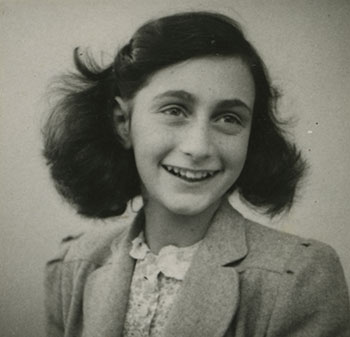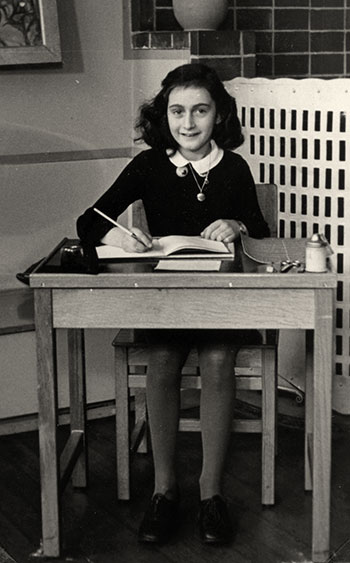The Story of Anne Frank
Anne Frank was a Jewish girl living in the Netherlands during World War II. Originally from Germany, her family fled Frankfurt after Hitler came to power in 1933. Two years after the Nazis occupied the Netherlands in 1940, Anne went into hiding with her mother, father, older sister Margot and four other people in a secret annex above her father's factory at Prinsengracht 263 in Amsterdam. She was just 13 years old.
Life in the Netherlands had been fun and carefree for Anne and her sister until the Nazis arrived. A series of anti-Jewish regulations meant the Franks had to move house, the girls had to change school, and their father Otto lost his business. It was when Margot was instructed to report at a German work camp in 1942 that the family retreated into the annex, although Otto had been planning it for some time. His Jewish business partner Herman Van Pels also moved into the annex with his family and they were all helped by non-Jewish Dutch friends. A few months later they were joined by dentist Fritz Pfeffer.
Inside the annex, during the day, they all had to keep quiet. The factory was busy but full of workers they weren't sure they could trust. After dark, their helpers brought them supplies: food, clothes, books and games to help pass the time. They couldn't go outside or contact any of their old friends or family for fear of being discovered.
Anne's diary, a birthday present just weeks before they went into hiding, became her best friend and confidante. In the diary she reveals her hopes and dreams, her thoughts and fears and that, despite everything, she believes there is still good in the world. She began turning her diary into a novel called 'The Secret Annex', which she sadly never completed.
"Despite everything, I believe that people are really good at heart" - Anne Frank
After more than two years in
The Diary of Anne Frank was first published in 1947 and has since been published in over 70 languages, and in 60 different countries, making it one of the most translated books in the world. In June 2019, on what would have been Anne Frank's 90th birthday, the te reo Maori translation of the diary was launched at the Museum of New Zealand Te Papa Tongarewa in Wellington.
The touring exhibition, Anne Frank: Let Me Be Myself, was created by Anne Frank House in Amsterdam and is based on the record of Anne's life in her diary, as well as documented historical events from the Second World War. The exhibition aims not just to educate visitors about what happened in the past but how those themes are still relevant today. It asks us to consider what we can each do to make sure that persecution of individuals due to race, religion, age, sexuality or disability is brought to an end.



